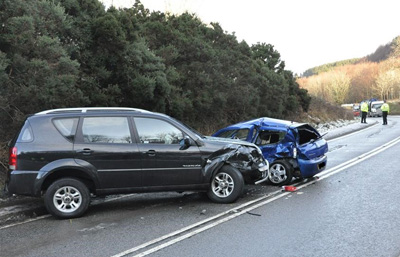 I never thought I’d be writing about this a second time, but here goes: Round 2 on “accident” vs. “crash.” Here’s a sample of Twitter reaction to my post on the subject yesterday morning:
I never thought I’d be writing about this a second time, but here goes: Round 2 on “accident” vs. “crash.” Here’s a sample of Twitter reaction to my post on the subject yesterday morning:
@emilymbadger: advocates would say this [i.e., drivers are rarely punished for killing pedestrians] is one consequence of a culture of “accidents”: http://t.co/dJVUnJNcKi
@DroptheAword: 30k people die on US roads each yr. Acceptance of this as inevitable come from the “accidents happen” mindset.
@jakekthompson: Calling a crash an “accident” takes blame away from the cause, and removes incentive to fix the problem.
The problem is that these are just assertions, not arguments. There doesn’t appear to be any evidence at all to back them up. I myself doubt that the word “accident” has any significant effect on how people view traffic safety, but then, I don’t have any evidence either.
Now, it’s not as if everything in the world demands a battery of rigorous studies. There’s nothing wrong with just trying to persuade people. But in this case, a lot of energy and attention will be spent on this that could be spent on other campaigns to improve road safety, so it would be nice to have at least a little bit of research that’s on point. It wouldn’t be too hard to get a start on this, either. Read this paragraph:
A teenager from Smithville is in critical condition after a Monday morning accident in Jonesville that is being investigated as a hit and run. The teen’s car was struck from behind by an Oldsmobile and then crossed into the northbound lane, where it was struck in the side by a Chevrolet Silverado pickup truck. The driver of the Oldsmobile left the scene of the accident, and his or her identity has not been determined.
Now read this one:
A teenager from Smithville is in critical condition after a Monday morning collision in Jonesville that is being investigated as a hit and run. The teen’s car was struck from behind by an Oldsmobile and then crossed into the northbound lane, where it was struck in the side by a Chevrolet Silverado pickup truck. The driver of the Oldsmobile left the scene of the crash, and his or her identity has not been determined.
Does this alter your perception of what happened? Social scientists do this kind of research all the time, showing random subsets of subjects slightly different write-ups and then asking follow-up questions to see if the changes make any difference. This would hardly be conclusive, but it’s relatively easy to do and would provide at least a bit of evidence one way or another.
So: are there any enterprising grad students out there who want to take a crack at this? Or, better yet, someone who’s already done it?

















